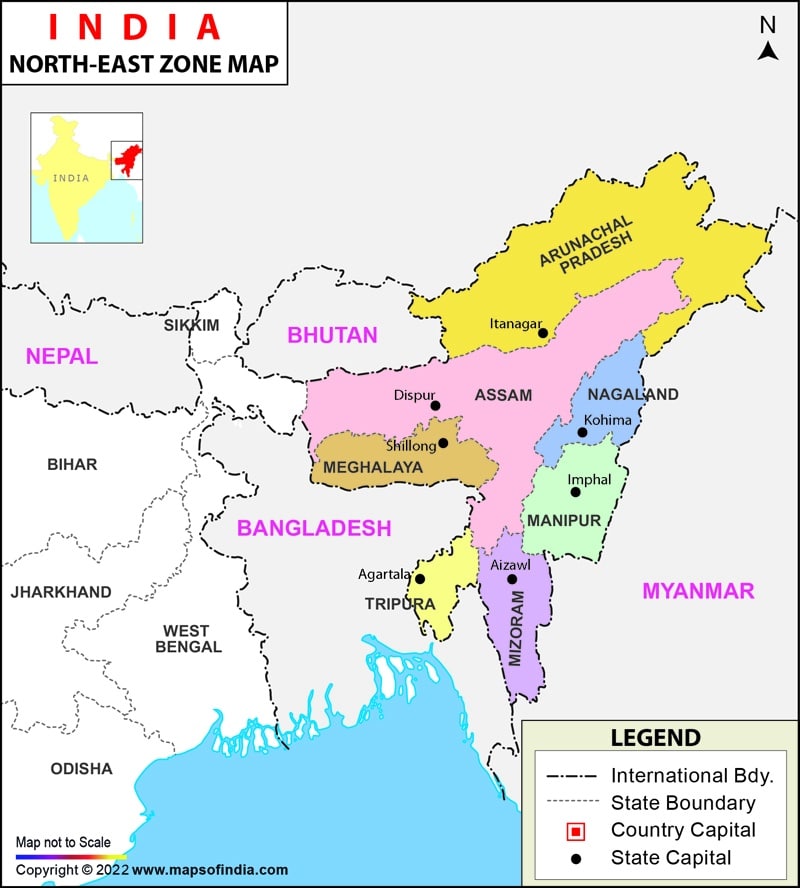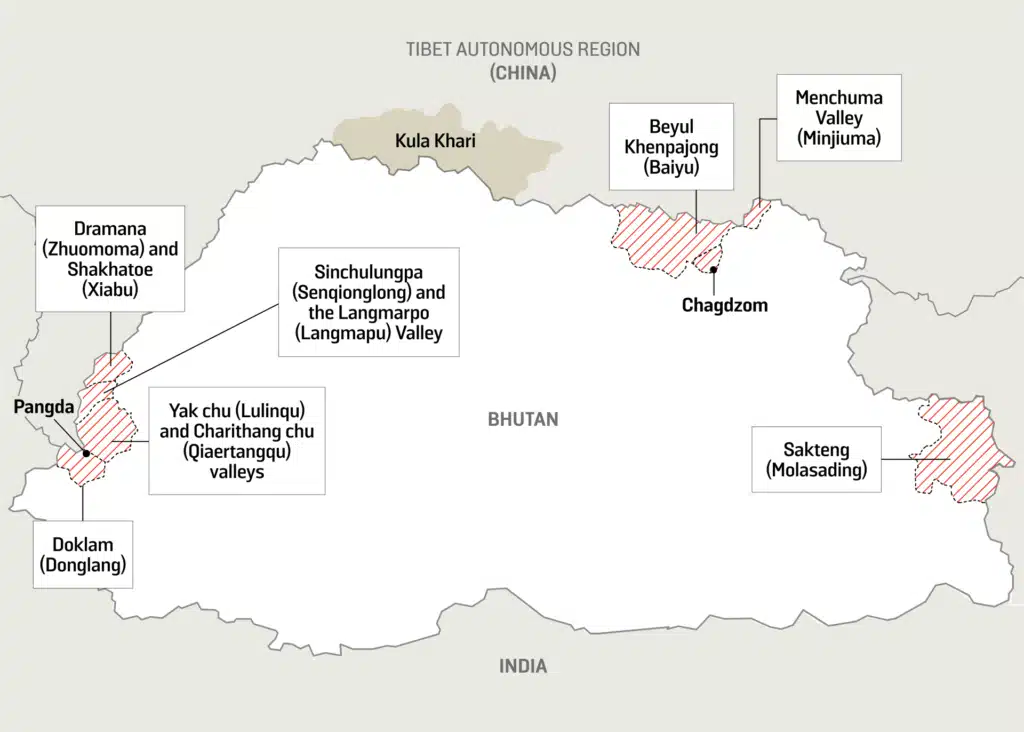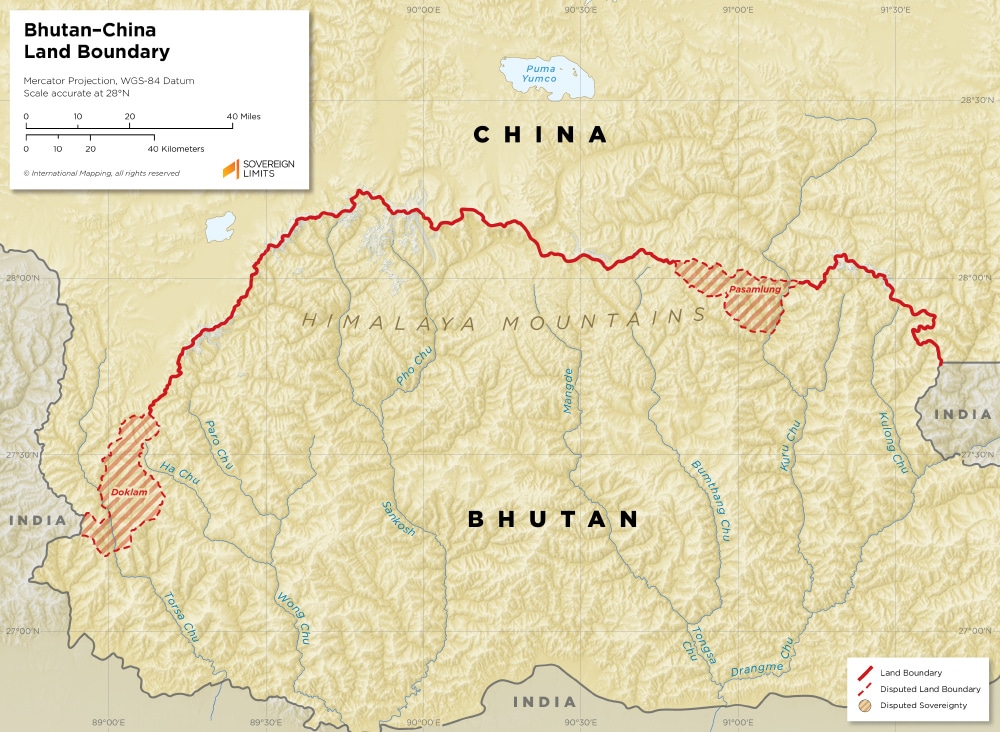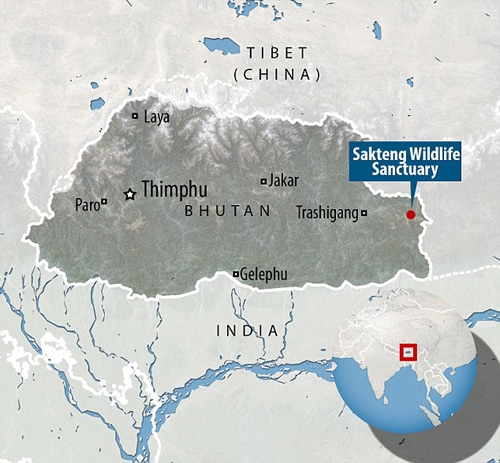India’s relations with Bhutan go back to 747 AD when a Buddhist monk Padmasambhava went from India to Bhutan and led the Nyingmapa sect of Buddhism. Thus, India contributed to the cultural growth of Buddhism in Bhutan.
India and Bhutan have been sharing ties since 1910 when Bhutan became a protectorate of British India, allowing the British to “guide” its foreign affairs and defence.
When India declared independence in 1947, Bhutan was among the first nations to recognise it. Since then, the relationship between the countries has become stronger, especially because Bhutan also has a historically tense relationship with China.
Diplomatic relations between India and Bhutan were established in 1968 with the appointment of a resident representative of India in Thimphu. Before this, relations with Bhutan were looked after by India’s Political Officer in Sikkim.
- Besides sharing a 699 Kilometres border, India and Bhutan also share deep religio-cultural links. Guru Padmasambhava, a Buddhist saint played an influential role in spreading Buddhism and cementing traditional ties between people in both nations.
- India opened an office of a Special Representative in Thimphu in 1968, Bhutan reciprocated in 1971. The two offices of special representatives were upgraded to full-fledged embassies in 1978
The basic framework of India-Bhutan bilateral relations was the Treaty of Friendship and Cooperation signed in 1949 between the two countries, which was revised in February 2007. Under the 2007 India-Bhutan Friendship Treaty, the two sides agreed to “cooperate closely with each other on issues relating to their national interests. Neither Government shall allow the use of its territory for activities harmful to the national security and interest of the other.”
The new treaty says that Bhutan can import arms as long as Indian interests are not harmed and there is no re-export of the weapons, either by the government or individuals. Article 6 and 7 in the current treaty encompass the issue of ‘national treatment’ and equal privileges for citizens on each other’s soil.
The India-Bhutan Friendship Treaty not only reflects the contemporary nature of Indo-Bhutan relationship, but also lays the foundation for the future development in the 21st century. India and Bhutan celebrated 50 years of diplomatic relations in the year 2018.

Areas of Cooperation b/w India & Bhutan
Political
- Bhutan is a new entrant to democracy. India has shared close relationship with the monarchy and there is a continuity of the warmth in the relations after political transition. The traditionally unique bilateral relations, characterized by trust and understanding have matured over the years. The special relationship has been sustained by the tradition of regular visits and high level dialogues between the two countries.
- Prime Minister Shri Narendra Modi chose Bhutan as his first foreign destination when he paid a State Visit to Bhutan from 15-16 June, 2014. The visit reinforced the tradition of regular high level exchanges between the two countries. During the visit, the foundation stone of the 600 MW Kholongchhu Hydropower Project was laid, and the Supreme Court building was inaugurated which was constructed with Government of India’s assistance.
- During Oct-Nov 2017, His Majesty the King of Bhutan accompanied by Her Majesty the Queen of Bhutan and Royal Prince His Royal Highness Jigme Namgyel visited India.
Economic
- India is Bhutan’s largest trading partner. In 2018, total bilateral trade between the two countries stood at Rs. 9227.7 crores.
- Major exports from India to Bhutan are mineral products, machinery and mechanical appliances, electrical equipments, base metals, vehicles, vegetable products, plastics and articles. The major items of export from Bhutan to India are electricity, ferro-silicon, portland cement, dolomite, carbides of calcium carbides of silicon, cement clinkers, timber and wood products, potatoes, cardamom and fruit products.
- Mutually beneficial economic linkages between India and Bhutan have been an important element in our bilateral relations.
- The trade between the two countries is governed by the India-Bhutan Trade and Transit Agreement 1972 which was last renewed in November 2016 (came into force w.e.f 29 July 2017).
- The Agreement established a free-trade regime between the two countries.
- As per the provisions of the bilateral trade agreement, trade between two countries is to be transacted in Bhutanese Ngultrum and INR.
- The Agreement also provides for duty free transit of Bhutanese exports to third countries.
- India continues to be the largest trade and development partner of Bhutan. India’s overall assistance to the 10th Five Year Plan of Bhutan (ended in 2013) was around Rs. 5000 crores, excluding grants for hydropower projects.
- India is Bhutan’s largest trading partner. In 2020, bilateral trade accounted for 82.6% of Bhutan’s total trade. Imports from India accounting for more than 77.1% of Bhutan’s total imports. Bhutan’s exports to India constituted 90.2 % of its total exports.
Hydel Power Cooperation
- Hydropower projects in Bhutan are an example of win-win cooperation, providing a reliable source of inexpensive and clean electricity to India, generating export revenue for Bhutan and cementing our economic integration.
- Government of India has constructed three Hydroelectric Projects (HEPs) in Bhutan totaling 1416 MW, which are operational and exporting surplus power to India. Hydropower exports provide more than 40% of Bhutan’s domestic revenues and constitute 25% of its GDP.
- The ongoing cooperation between India and Bhutan in the Hydropower sector is covered under the 2006 Agreement on Cooperation in Hydropower and the Protocol to the 2006 agreement signed in March, 2009. Under this Protocol, Government of India has agreed to assist Royal Government of Bhutan in developing a minimum of 10,000 MW of hydropower and import the surplus electricity from this to India by the year 2020.
- In April 2014, an Inter-Governmental Agreement was signed between India and Bhutan for development of four more HEP’s of capacity 2120 MW.
Cultural
- Around 75% of Bhutan’s population follows Buddhism, while most of the rest follow Hinduism. The keystone that drove the main engine of this relationship was Bhutan’s deep devotion to Gyagar (the holy-land India) fidelity embedded into the Bhutanese ethos by the wisdom of the 8th century Indian leader and philosopher Padmasambhava, also known as Guru.
- Government of India scholarships are granted to Bhutanese students at undergraduate and post graduate levels every year in Indian institutions under schemes like the Nehru Wangchuck Scholarship Scheme.
- India-Bhutan Foundation was established in August 2003 during the visit of the present King (then Crown Prince) to India with the aim of enhancing people to people exchanges in focus areas like education, culture, scientific and technical research and environment protection.
- There are about 60,000 Indian nationals living in Bhutan, employed mostly in hydro-electric projects and construction and roads industry. In addition, between 8000 and 10,000 daily workers come into Bhutan everyday to work in border towns.
Defence
- Apart from defence ties governed through Friendship Treaty, the Eastern Army Command and the Eastern Air Command both have integrated protection of Bhutan into their role . The Indian Military Training Team (IMTRAT), headed by a Major General, plays a critical role in training Bhutanese security personnel.
Border Management
- There is a Secretary-level mechanism on border management and security related matters between the two countries.
- There is also a Border District Coordination Meeting (BDCM) Mechanism between the bordering States and the Royal Government of Bhutan (RGoB) to facilitate coordination on border management and other related matters.
Multilateral Partnership
- Both India and Bhutan are founding members of SAARC that deals with economic, social and cultural development of South Asian Region. Both of them also share other multilateral forums such as BBIN(Bangladesh, Bhutan, India, and Nepal), BIMSTEC (Bay of Bengal Initiative for Multi Sectoral Technical and Economic Cooperation) etc.
New Areas of Cooperation
- Apart from hydro-power cooperation and development partnership has moved into new and emerging areas with full interoperability of the flagship digital project RuPay, which has been successfully completed.
- Bhutan became the second country to launch the BHIM app, further deepening the financial linkages between our two countries.
- Space cooperation has continued with the two countries collaborating on the development of a small satellite for Bhutan.
- COVID-19 Assistance: In line with India-Bhutan unique and special relations, GoI ensured continuous supply of trade and essential items to Bhutan, despite COVID-19 related lock-downs.
Significance of Bhutan to India
Bhutan is also the only country where the bilateral relationship is free from tension. Bhutan was the first country to which present PM of India chose to visit after taking office in the year 2014. The visit strengthened India’s “neighbourhood first” approach.
Strategic
- The geographical location of Bhutan makes it strategically important to India. Bhutan has 3 border disputes with China of which the Doklam is coveted most by China. The Doklam Plateau lies immediately east of Indian defences in Sikkim. Chinese occupation of Doklam would turn the flank of Indian defences completely. This piece of dominating ground not only has a commanding view of the Chumbi Valley but also overlooks the Silguri Corridor further to the east.
- The stability of North Eastern (NE) States of India requires closer cooperation between neighbours. Bhutan has in the past through Operation All Clear and Operation Flush Out acted against Assamese insurgents taking shelter in its territory .
- Bhutan has been India’s longtime ally. It stood by India in the face of its conflict with China in 1962. In 1971, Bhutan and Mongolia were the first to back India’s stand for Bangladesh crisis. Bhutan’s support is crucial for India’s claim for Permanent Member to UNSC.

Energy
- India has a set target of 175 GW of renewable energy by 2022. Bhutan has estimated hydroelectric potential of 30,000 MW. The surplus hydroelectric power could help India meets its energy targets.
Regional Cooperation
- Bhutan is also key for India’s plan to push sub-regional cooperation. The relevance of BIMSTEC has increased, especially when SAARC is in doldrums.
- Bhutan is a part of BIMSTEC, and BIMSTEC-FTA which is under discussion will be crucial for sub-regional economic integration and Act East Policy.
China Factor
- China, with its increasingly aggressive moves along its Himalayan borders, seems to be employing the same methodology it has used in its ongoing takeover of the near-entirety of the South China Sea.
- On 16 June 2017, Chinese troops with construction vehicles and road-building equipment began extending an existing road southward in Doklam. This precipitated a military border standoff between the Indian Armed Forces and the People’s Liberation Army of China. The crisis ended as both India and China announced that they had withdrawn all their troops from the face-off site in Doklam. However, it underscored to the Bhutanese that their unresolved border dispute with China was leaving them vulnerable to entanglement in big power rivalries. Hence, Bhutan is increasingly keen to settle its territorial dispute with China. China is pushing Thimphu to cede control over Doklam while India is keen on Bhutan retaining control over it.
- India and Bhutan share doubts over the China’s ambitious ‘Belt and Road Initiative ‘ and both the nations have been averse to participating in the Chinese programme. In addition to above, unlike Nepal in the recent years, Bhutan has carefully avoided playing its two behemoth neighbours (India & China) against each other.

Sakteng Wildlife Sanctuary conflict
- It was at the 58th Global Environment Facility (GEF) meeting on June 2 and 3 that China claimed Sakteng for the first time.
- Covers an area of 650 sq km and lies in Bhutan’s eastern district. where there was no claim by chain so far.
- Thimphu has rejected Beijing’s claim. Not only is the Sakteng Wildlife Sanctuary “an integral and sovereign territory of Bhutan,” but also “at no point during the boundary discussions” between the two countries “has it featured as a disputed area,”
- Even the package proposal that China put forward in 1996 refers only to disputed territories in central and western Bhutan. It makes no mention of the Sakteng Wildlife Sanctuary or any other area in eastern Bhutan.
- Indeed, there is no cartographic evidence supporting China’s claim over Sakteng.

Concerns for India:
- China’s new territorial claim is a part of the larger Chinese tactics of putting pressure on India’s smaller neighbours, to punish them for any closeness to India.
- In 2017 China had intruded into Doklam plateau, which is claimed by Bhutan, leading to a standoff between Indian and Chinese Armies.
- China might be doing this to put a pressure on India, or to divert India’s attention from its aggression at Ladakh.
- Sakteng is situated along the border with Arunachal Pradesh, some part of which is also claimed by China.
- Even after the India-Bhutan Friendship Treaty of 2007, Indian military is virtually responsible for protecting Bhutan from the kind of external threat that the Chinese military poses.
Significance of India to Bhutan
- India is important for Bhutan’s security and stability. Through the 2007 Friendship Treaty , India serves as a virtual security guarantor of Bhutan. India is Bhutan’s most important economic and trading partner, accounting for nearly 60 percent of Bhutan’s exports, and 75 percent of its imports.
- India is a vital donor of economic aid to Bhutan. Indian assistance to Bhutan 10th Five Year Plan was around 5000 Crore INR. India has helped Bhutan in infrastructure development like Airports, Hydel Power Plants, etc.
- Bhutan has surplus power generated from the hydroelectric projects (HEPs), which is exported to India providing Bhutan a steady stream of revenue.
- India has agreed to buy 10,000 MW of power from Bhutan by 2020, alongside providing loans to build the 10 hydroelectric projects in the country’s fast-moving mountain rivers. Bhutan’s effort towards expansion in tourism, IT, and education offers considerable potential for mutually beneficial economic and business partnership.
Overall Benefits to the Region
- The peace, stability and prosperity of the subcontinent essentially require cooperation between neighbours. India’s “Neighbourhood First” and “Act East” Policy have similar objective of greater engagement with neighbours for regional peace and prosperity.
- The success of South Asian Association for Regional Cooperation (SAARC) is dependent on close cooperation of member countries, in which India and Bhutan plays a significant role.
- China’s growing assertiveness has strategic implications to the interest of South Asia. India as a major power has a vital role in keeping Chinese at bay.
Challenges in Relations
- Bhutan is facing high unemployment rate and national debt, which could provide possible entry to China, something which doesn’t suit India’s interests.
- The Upper House of Bhutan’s Parliament decided to opt out of Bangladesh-Bhutan-India-Nepal (BBIN) connectivity project. The Bhutanese fear that the implementation of the deal would lead to an influx of vehicles from other countries impacting its own transporters and degradation of environment.
- Refugee Issue: These are refugees, who were branded as anti-nationals and chased away by the Bhutanese army for holding protests in the late 1980s and early 1990s demanding multi-party democracy at a time when Bhutan was under absolute monarchy. They took refuge in Nepal and India. The Nepal government recognised them as refugees in 1991. Bhutanese refugees have time and again requested the government of Nepal to help them go back home, while Nepal and International community want India to help . But Bhutan is reluctant to repatriate refugees on ground of its impact on demography. India has maintained distance from the issue given the strategic importance of Bhutan.
- There have been instances when India has meddled in Bhutan’s internal affairs. This has led to negative perception of India in the minds of Bhutanese.
- There is a growing feeling in Bhutan that India’s development of Bhutan’s hydropower production is driven by self-interest as it is getting Bhutan’s surplus power at relatively cheap rates.
- From internal security perspective, illicit establishment of camps by militant outfits in the dense jungles of south-east Bhutan is a cause of concern for both the nations.
- China’s continuous claims to important border areas such as Chumbi valley and Doklam and its continuous efforts for establishing strong diplomatic and economic relations with Bhutan have been continuous source of concern for India.
Way Forward
- India needs to step up efforts to publicize the benefits that accrue to Bhutan from Indian projects.
- India continuously needs to explore new areas of cooperation with Bhutan. Decision of setting up of ISRO’s ground station in Bhutan is a welcome step. The station will help Bhutan in providing weather related messages to its far flung areas.
- India should try as much as possible to remain out of Bhutan’s internal matters, though it can act as a mentor.
- Safety of Border from China is a concern for both nations. Therefore, both sides need to work together on this issue.
- Being neighbours, it is necessary that both nations continuously recognise value of each other. For this, regular high level visits from both the sides are necessary.
Conclusion
While Bhutan all through the years has appreciated India for its economic assistance, India, for its part, has been sensitive to Bhutan’s developmental needs. The India-Bhutan relationship is perhaps the only bilateral engagement in South Asia, yielding high dividends to both parties. The relationship has helped Bhutan shape a unique developmental trajectory based on Gross National Happiness and unbeatable model of sustainable development by being Carbon Negative overall. The Indian prime Minister Shri Narendra Modi, on his visit to Bhutan has rightly named the blending of diplomacy and economy when he explained the idea of B2B as Bharat to Bhutan.
